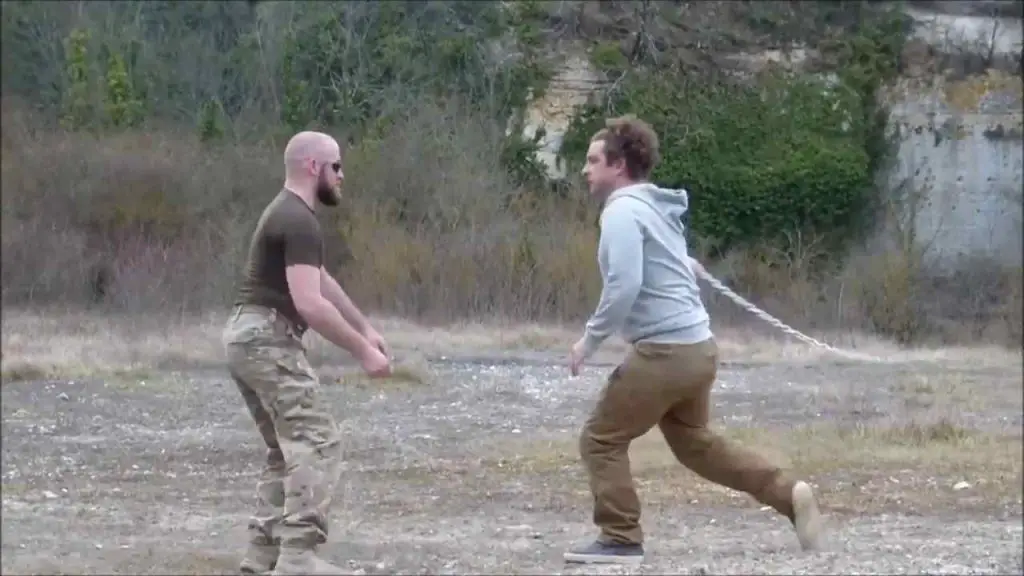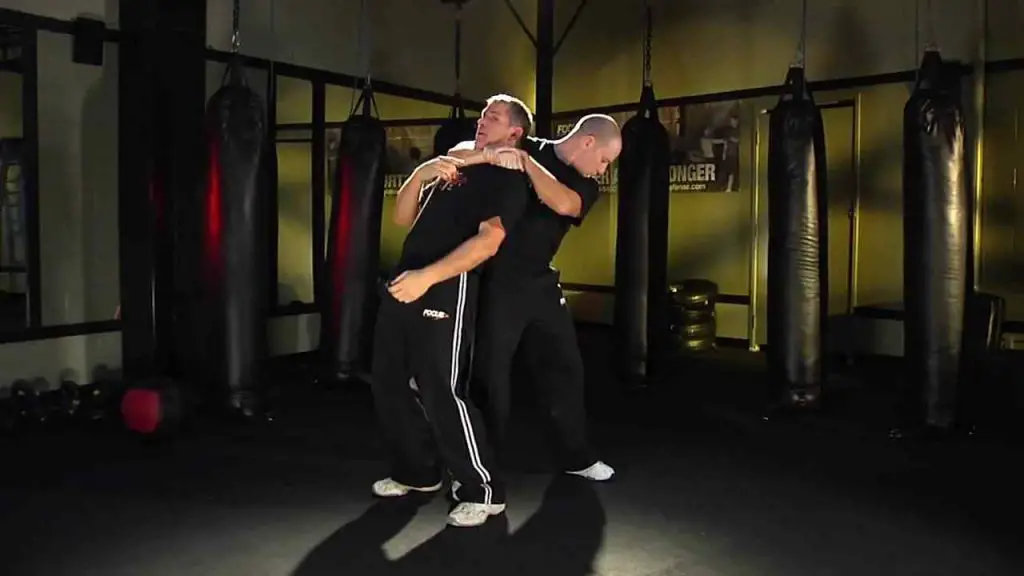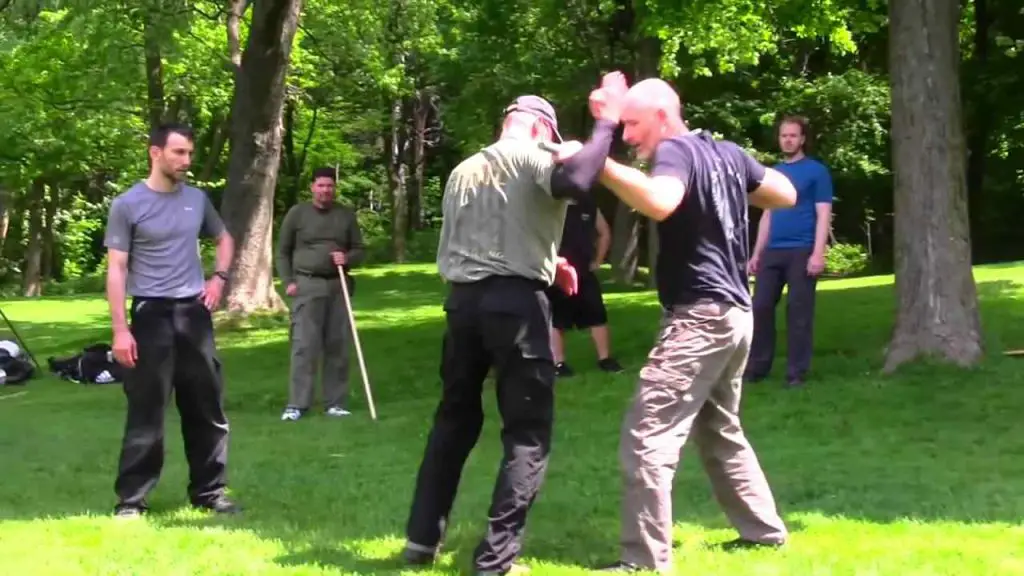You may have come across the styles Systema and Krav Maga if you are a person into martial arts or thinking which arts you should master. Even though they both look similar and are deadlier with no rules, self-defense, and are practicing martial arts (although Krav Maga isn’t strictly considered a martial art), they do have their differences. Let’s take a look into what these combat styles are and compare the similarities and differences. Note that we’re not doing this to determine which technique is superior; instead, we’re highlighting the best aspects of each style and using them as motivation to practice martial arts and self-defense.
What Is the Art of Systema?

Systema, literally meaning “System,” is a unique martial arts technique that originated in Russia about a millennia ago. Systema had derived from the exceptional combat skills of the Russian warriors who had to combat in threatening weather and terrains at odds with enemy raiders over the centuries.
With no strict rules and adapted from person to person, the moral code of Systema defines the fighter as a professional who uses the art to defend himself rather than wreak needless pain to the opponent. Systema is more about a balance between aggression and passiveness, that is, to enter the fight with a calm and present mind, and when the opportunity presents itself, be spontaneous in ending the battle.
Systema teaches one-to-one combat, knife fighting, pressure points attacks, and firearms training. In addition, Systema teaches how to control your fear/anger/pity over a more extended period of time, as well as how to relax (through breathing and stretching) in stressful situations, so that attacks on you are less effective, and the pressure points, the momentum of the fighters can be changed to your advantage using the clarity of mind gained from your training.
Systema is about controlling the opponent or making him think twice in attacking you, not permanently damaging the opponent by dangerous attacks, but using deep and heavy punches that will knock out someone with maximum impact.
There are four pillars or core principles of Systema:
- Breathing: Systema emphasizes breathing exercises before starting any training is the proper way to learn and develop the martial arts skills
- Relaxation: Only when your mind is clear and in a relaxed state can you focus your attention and not get easily distracted.
- Body Positioning: Positioning the body in a way that would always help you block your opponent’s attacks and get around his defenses for you to move in close enough for a good strike that would end the fight quickly.
- Movement: Act as a lever to throw the opponent off balance while applying only a little of your own strength.
What Is the Art of Krav Maga?

Krav Maga, the name in Hebrew which has been translated as “contact combat,” was developed about a century ago in Israel. Derived from a mixture of techniques sourced from Jujitsu, Boxing, Wrestling, Judo, Aikido, and Kyokushin Karate, this art is being used by the Israeli Defense Forces (IDF). Unlike Systema, Krav Maga is a new martial art system developed by the Israeli Military who needed a martial arts technique that was easy to learn, practical, extremely dangerous, and efficient enough for rapid deployment.
Using his boxing and wrestling training together with street fighting experience, Imi Lichtenfeld founded Krav Maga. It started with the Jewish Migration to Palestine, where he started to give lessons on combat training and skills to what was to become the IDF.
Krav Maga, like many martial arts, urges students not to attack physically, and if this isn’t possible, it encourages students to end a fight as fast and combatively as possible. Krav Maga uses both offensive and defensive moves alternately in combat with incredible speed, focus, and without pause.
Krav Maga promotes finishing a fight as quickly and aggressively as possible, and the attacks are mostly aimed at the most vulnerable parts of the body. They are not limited to techniques that avoid severe injury. Training also covers situational awareness, developing an understanding of one’s surroundings.
The core principles of Krav Maga are:
- Keep it simple
- Neutralize your threat as quickly as possible
- Simultaneous attack and defense
- Use weapons or weaponize any object you can find
- Continuous motion
- Gun, knife, and weapons disarming
- Focus on pressure points and vulnerable spots
- Subduing techniques
Systema vs. Krav Maga – The Similarity
Even though both Krav Maga and Systema are different philosophically, tactically, and in style, they do have one thing in common: they are originated to protect from attackers and for the survival of Israel and Russia, respectively. At a glance, these styles look similar, but only the purpose of originality can be considered as a similarity.
Systema vs. Krav Maga – The Differences

Tactic
Krav Maga uses techniques and teaching on how to strike, take-down, throw, groundwork, escapes from chokes and holds, empty-hand weapon defenses, stab with a knife, use of rifle and pistol for melee attacks, disarm, and arrest an attacker. Krav Maga also teaches to be resourceful and use everyday objects such as keys, pens, belts, and chairs in order to add power and lethality to your attacks to neutralize your danger as rapidly as conceivable.
Even though Systema teaches deep strikes and attacking techniques, it does rely heavily on the use of predefined methods as it depends on a person’s logical movements and will teach how to free the body off of any tensions to facilitate effortless activities, gain flexibility, explosive potential, focus your attention and not get easily distracted, control your breathing and build endurance in order to last longer than the opponent in a fight.
Equipment
The use of guards for arm, groin, head, mouth, shin and gloves, pads, and shields are common for both Systema and Krav Maga to perfect striking and to become self-aware of pressure behind attacks in training.
While knife, blades, whips, swords, and firearms are used in both Systema and Krav Maga, the technique of usage differs as Systema focuses on using the equipment while keeping your state of mind perpetually calm even when you’re fighting while Krav Maga relies heavily on shock and speed and capitalizing the opponent’s shock value even by using everyday objects as weapons and tools.
Philosophy
Systema is hundreds of years old, and it does not focus only on self-defense but on improving an individual’s life. Combat training is one segment of Systema and not its whole existence.
Systema is a combination of combat training and teachings on how to elevate the mind in order to deepen the spirit by controlling pride and ego, doing away with fear, self-pity, and delusion as well as not linger thoughts on irritation or anger, which will ultimately result in keeping the state of mind perpetually calm when fighting.
Krav Maga, contrastingly, relies on heavy military training for a person to have an effective and instinctive response when under stress. It also teaches mental toughness and situational awareness to strengthen mental fortitude, identify potential threats before an attack happens, plan ahead and attack only when necessary, and as a last resort.
Krav Maga was born as a necessity that had to be quickly learned and extremely deadly for the people who were meant to be the backup military force of Israel.
Style
While Krav Maga requires being proactive and taking things into your own hands, the Russian Systema approaches in a more stoic and psychosomatic way. This here lays a significant differentiator: action and result.
Systema focuses on the movements of the opponent and continuously assists you to square your opponent’s assaults and get around his guards for you to move in near sufficient for a great strike that would conclude the attack.
While Krav Maga focuses on attacking and allows you to preemptively attack any threat, denying them the opportunity to make counterattacks and ultimately subduing them.
Conclusion
Systema is a living principle for the Russian citizens, and all Israeli natives are taught Krav Maga’s basic tents, with some techniques limited to the defense forces.
With similarities in the nature of the origin of both System and Krav Maga, both martial arts are unique and different in their own way. Krav Maga is trained quickly and turns your weaknesses into strengths so that your attack or defense becomes a reflex whenever you need it, whereas Systema is a technique that requires learning and aims to remove your weak points so that your attacks or defense can be more efficient. One is associated with a fighter, who is guided by intuitive responses with developments that supports his/her body and imbued reflex activities, while the other fighter is capable in an extent of moves that he/she has trained for near combat defense.
The martial arts are a nation’s cultural heritage, and they represent a rich history of their own. Also, even though their origins are similar, their techniques and uses are perfected over time. We cannot consider a particular martial art to be above any other martial arts as each has its own uniqueness, differences, and purpose.
